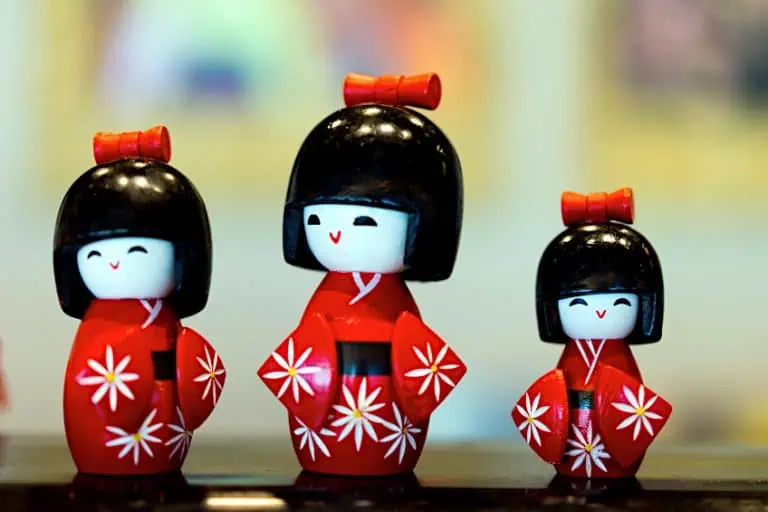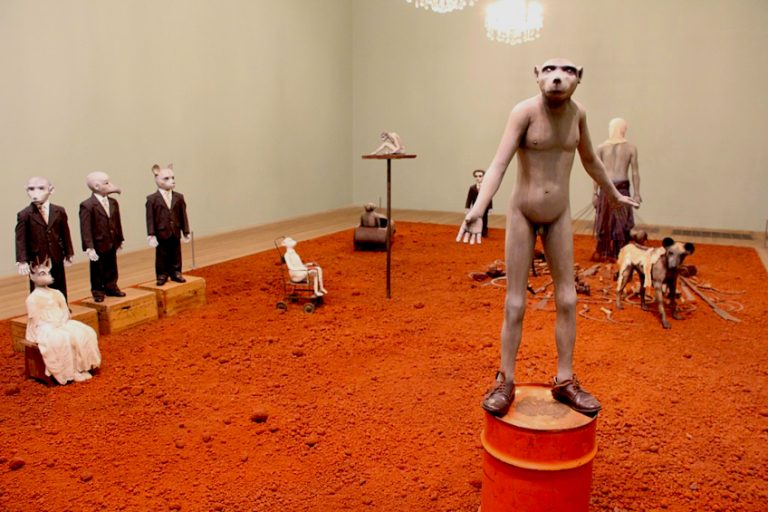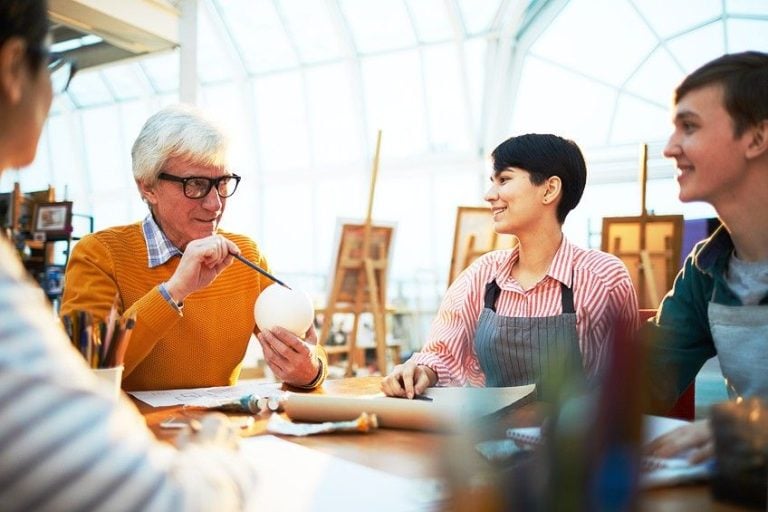Elements of Art – The Building Blocks of Visual Communication
This post may contain affiliate links. We may earn a small commission from purchases made through them, at no additional cost to you.
What are the elements of art and how are these art elements used by artists? It is essential to have a strong foundation from which to expand in order to fully understand any discipline, and mastering the seven elements of art is crucial for visual artists. These art elements are texture, form, space, shape, value, line, and color. Below, let’s explore each of these elements in greater detail.
Table of Contents
What Are the Elements of Art?
These artistic building blocks are fundamental, and understanding how they function is critical for both artists and art enthusiasts. It is simpler to examine, analyze, and produce any sort of artwork, from photography and painting to architecture and sculpture, by obtaining a greater grasp of the seven elements of art. Many of these elements are actually taught to students as part of their basic art education. Yet, while the ideas may appear basic at first, if perfected, they can expand and develop in all directions, regardless of the kind of art being made.
| Elements of Art | Characteristics |
| Color in Art | Several fundamental elements of color encompass the color wheel, diverse color schemes, primary, secondary, and tertiary hues, complementary and analogous shades, as well as the concepts of hues, tones, tints, shades, saturation, intensity, value, and color temperature. |
| Form in Art | These forms vary from cubic, spherical, pyramidal, or conical, among numerous others, and they exist in a three-dimensional space, encompassing both geometric and organic manifestations. |
| Line in Art | Within the realm of art, various line types exist, encompassing horizontal, vertical, diagonal, short, long, curved, or zig-zag variations. These lines serve as building blocks, laying the foundation for an artwork’s fundamental structure and imparting diverse effects such as movement, rhythm, and emphasis. |
| Shape in Art | Shapes in art encompass a wide spectrum, including squares, circles, triangles, and rectangles, all of which can take on a two-dimensional, geometric, or organic form. |
| Space in Art | This aspect relates to the three-dimensionality or depth achieved within a composition. It involves the interplay of positive and negative space, which can be skillfully employed to generate various artistic effects. |
| Texture in Art | Texture in art pertains to the “surface quality” of artworks, encompassing both real and implied tactile sensations. |
| Value in Art | In the realm of art, “value” pertains to the interplay between light and darkness within colors, presenting itself in low-key, high-key, or middle-key variations. |

Interior with Portraits by Thomas le Clear (c. 1865); Smithsonian American Art Museum, Public domain, via Wikimedia Commons
Art elements are tangible visual components that function in unison with art principles to arrange and unify them.
Line
One of the most essential and versatile elements of art is the line. It serves as the visual foundation for all other elements in an artwork. It would be hard to delineate any type of form or shape without the use of a line. The line is significant because it can represent a number of feelings and moods. A rough line conveys rage or aggression, whereas a fluid, flowing line conveys tranquility or elegance. Artists employ several sorts of lines to achieve various effects in their works. A thick, forceful line, for instance, might convey a sense of gravity or solidity, whereas a delicate line can convey an impression of delicacy or fragility. Artists can achieve the appearance of dimension by employing lines to outline objects.
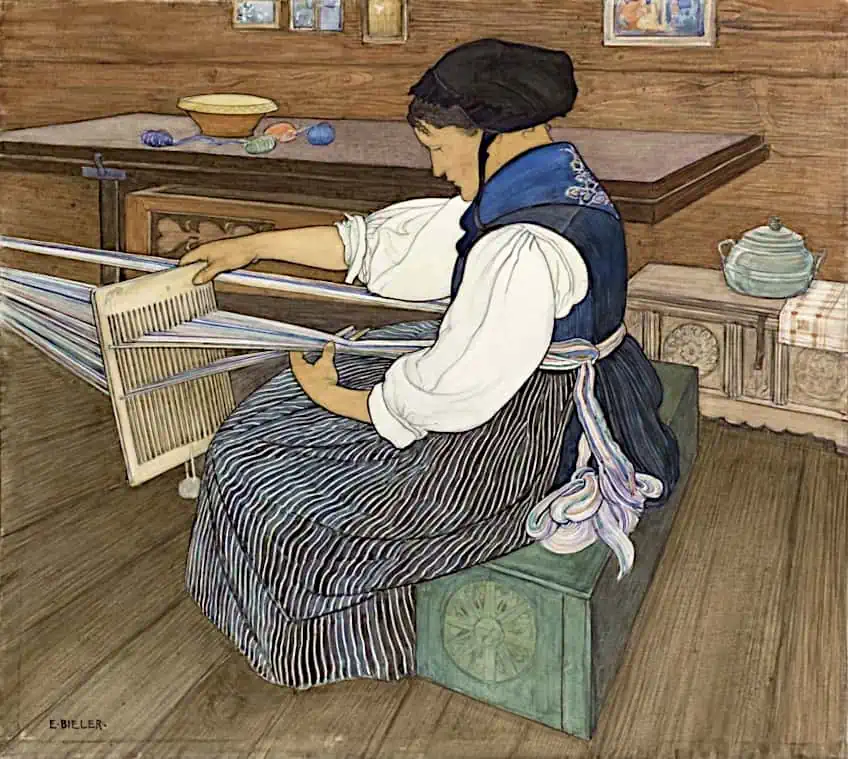
The Weaver by Ernest Biéler (1949); Ernest Bieler, Public domain, via Wikimedia Commons
Lines can also be used to represent movement or direction in a painting, directing the eye of the viewer through it. Line in artworks can be utilized in this method to produce a feeling of harmony and equilibrium in a piece of art. The line is essential as it can convey the artist’s individuality and style. Every artist uses lines in a different manner to produce their art. Some painters employ loose, expressive lines to convey fluidity and freedom, while others use exact, precise lines to convey discipline and refinement. We can learn about an artist’s creative process and the concepts they want to portray by analyzing how they utilize lines.
There are several methods that painters can apply when it comes to using lines. Contour line drawing is a simple method that includes sketching an outline of an object or person using a continuous single line. This approach can be utilized to make extremely detailed, realistic drawings as well as more stylized, emotive compositions. Cross-hatching is another method that includes drawing a succession of parallel lines that overlap to produce shade and texture. This method may be used to provide a variety of effects, ranging from subtle tone fluctuations to harsh, striking contrasts.

La Toilette by Édouard Manet (1878); Édouard Manet, Public domain, via Wikimedia Commons
Color
Color is an indispensable element of art that serves a significant function in the production of visual art. It is a powerful tool used by artists to express emotions, establish moods, and create a feeling of harmony or dissonance within a piece of art. Color is significant because of its capacity to provoke emotions and impact the viewer’s impression of a piece of art.

The Offering by Saturnino Herrán (1913); Museo Nacional de Arte, Public domain, via Wikimedia Commons
Artists can elicit a wide range of emotions by experimenting with value, and intensity – the three building elements of color. Nothing alters an artwork’s emotional resonance more than color. Color was skillfully handled in the work of masters such as Monet, Van Gogh, and Toulouse-Lautrec to evoke specific emotions.
Color may be used to represent something or to produce a pattern. It might be chosen for contrast or to convey a certain mood. A thorough grasp of color theory allows an artist to make greater use of the colors at their disposal. A color wheel is a fantastic tool. It is intended to demonstrate how colors are organized and how they interact with each other. The three main colors are located in the center of the color wheel, while the secondary colors – two primary colors mixed – are located on the outside circle.
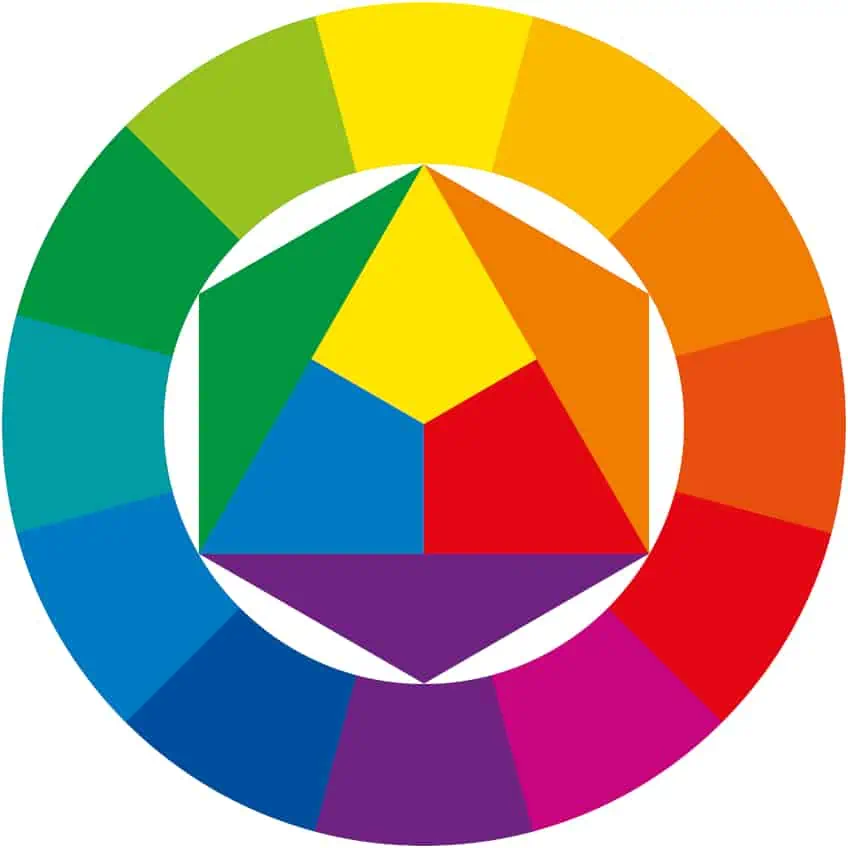
The color wheel; Stock image
The very edge of the circle contains tertiary colors, which are a combination of primary colors and a neighboring secondary color. Color is utilized in art to produce balance, contrast, and emphasis, among other things. Complementary hues, such as green and red or orange and blue, might, for instance, be employed to generate tension and intensity in a piece of art. Green, blue, and purple are examples of analogous hues that can be utilized to produce a feeling of tranquility and unity.
Color can additionally be used to provide a composition with a feeling of depth and space. Artists can achieve an impression of distance and dimension by utilizing warm colors in the front of a composition and cold hues in the background, such as green and blue.
Shape
Shapes are two-dimensional, flat, and have just height and breadth as a result of closed lines. Geometric forms, such as squares and circles, are mathematical and exact, but organic shapes are influenced by nature and are curvy and abstract. Henri Matisse’s collage art makes extensive use of organic shapes, whereas Piet Mondrian’s works are noted for their focus on geometric patterns. Shapes can influence how we view a composition. Triangles, for example, might assist focus the eye on a specific spot, but circles symbolize continuity. Artists can create intricate patterns and figures with a feeling of dimension and depth by combining shapes.
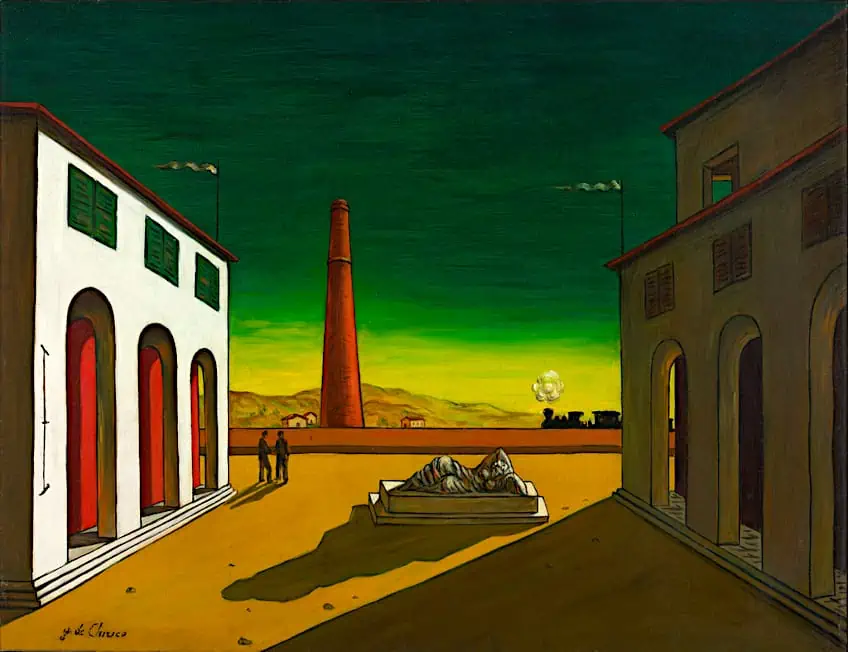
Piazza d’Italia by Giorgio de Chirico (1952); Goforthlauren, CC BY-SA 4.0, via Wikimedia Commons
A circle and a triangle, for instance, can be joined to form the structure of a cylinder. Shape is also vital in the development of naturalistic and abstract art. Squares, circles, and triangles are commonly related to structure, stability, and balance. In contrast, organic forms are commonly associated with movement, nature, and freedom. Space within a composition may also be defined by shape. Positive shapes in a composition are the objects or figures, whereas negative shapes are the spaces surrounding them.
One can create harmony and balance inside a painting by carefully balancing negative and positive shapes. To give a sense of depth, one common technique is to utilize value. A feeling of space can be created inside a composition by utilizing darker values in the front and brighter values in the background. Texture can also be employed to provide aesthetic interest and intricacy to a shape. One can create a tactile quality that pulls the viewer’s eye by varying the texture inside a shape. Shape is significant because of its capacity to produce form, communicate meaning, and delineate space within a composition.
Form
Value, shape, and texture combine to create form, which can be either representational or abstract. Form is utilized in art to give a feeling of naturalism or abstraction, among other things. Form is utilized in representational painting to give the appearance of three-dimensional space and to convey an impression of realism. One can create a sense of depth and dimensionality by applying methods like shading, making the object or person look more alive. Form is employed in abstract art in a more subjective way, usually to communicate mood or emotion. Form may be used by abstract painters to create intricate, multi-layered paintings that generate a feeling of wonder or ambiguity.

Laocoön by El Greco (between 1610 and 1614); El Greco, Public domain, via Wikimedia Commons
Abstract artists can produce works that defy the viewer’s perceptions and inspire them to examine the artwork on a deeper level by distorting form. Artists can create a feeling of movement or flow that moves the viewer’s attention around the artwork by changing the shape, size, and positioning of things or people. Chiaroscuro, or the use of light and shadow to give a sense of depth and volume, is an essential technique used by painters to create form.

Painter and Model by Felix Nussbaum (1938); Felix Nussbaum, Public domain, via Wikimedia Commons
One can create volume and depth within a painting by employing darker values in the parts of a person or object that are in shadow and brighter values in the regions that are in the light. Some of the most typical forms include pyramids, cylinders, and spheres, however, they can also be amorphous. Form is crucial in sculpting, but it can also be simply integrated into sketching and painting utilizing 3D techniques. Bernini was a virtuoso of form, crafting his sculptures in such a way that they could be enjoyed from every angle.
Form is also an important aspect in architecture, with renowned architects such as Zaha Hadid, Frank Lloyd-Wright, and Tadao Ando giving this element serious thought in their projects.
Value
Color value refers to the brightness and darkness of a color. The contrast is characterized by the distinction between the lightest and darkest values, with white being the lightest and black being the darkest. Playing with value may alter not just particular forms, but also the atmosphere of the artwork. Value is so significant that the Italians coined the term “chiaroscuro”, which relates to the juxtaposition of light and dark in a work of art. Caravaggio was a renowned practitioner of chiaroscuro in his somber oil paintings.
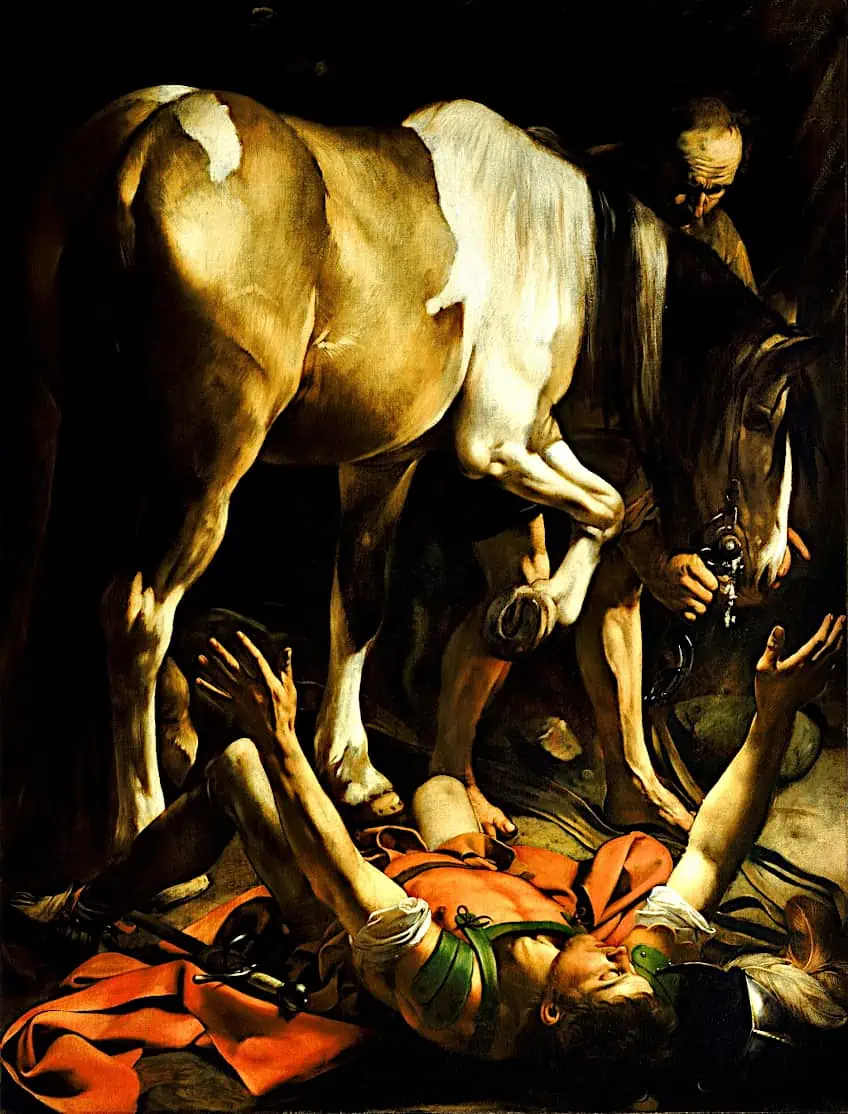
The Conversion on the Way to Damascus by Caravaggio (1600); Caravaggio, Public domain, via Wikimedia Commons
Photographer Ansel Adams is another illustration of an artist who successfully exploited value to his advantage in his landscape photography by employing zones of contrast to make his works more interesting to look at. Sfumato, or the mixing of values to produce a soft, hazy look, is another notable technique.
Artists can even create a feeling of the atmosphere within a piece by mixing values together. Value may also be utilized to convey movement and orientation within a piece, creating a flow that moves the viewer’s attention across the artwork by employing value to create a gradient of light to dark. Value can additionally be applied to add contrast to a design. One can create a feeling of tension and visual intrigue in their works by creating a great contrast between bright and dark values.
In contrast, low contrast might help to create a more quiet and more calm feeling within the picture. Rembrandt van Rijn’s painting The Night Watch (1642) is an example of an artwork that employs value effectively. Rembrandt used a dramatic contrast of dark and light values in this artwork to convey a sense of drama and movement. The artwork portrays a group of soldiers and their leader standing guard at night, with the captain in the middle lit by a powerful light source and the other figures and backdrop in darkness.

The Nightwatch by Rembrandt van Rijn (1642); Rembrandt, Public domain, via Wikimedia Commons
Texture
Texture is one of the art elements that also appeals to our tactile senses. It is described as a representation of how something feels or appears to feel. Sometimes we’re talking about a tangible texture, like in the instance of Icelandic artist Hrafnhildur Arnardóttir, who makes installation art out of synthetic hair. In other instances, the texture is an assumed two-dimensional visual texture. Rough, smooth, hard, soft, fuzzy, fluffy, and bumpy are just a few examples of textures that elicit varied reactions. For example, a hyper-realistic artist could prefer clouds to appear fluffy, but a surrealist artist might experiment with texture to provide a surrealistic experience for the audience.
Antonio Canova, a 19th-century sculptor, was excellent at this, as seen by his image of Napoleon’s sister, who is sitting on a pillow that appears so soft that it’s difficult to believe it’s actually carved from marble. One can give the appearance of different materials or surfaces by utilizing different textures on different portions of the artwork. This might give the artwork a more alive and three-dimensional appearance. You could create a feeling of diversity and complexity inside the artwork by using an assortment of textures, making it more visually appealing for the audience.
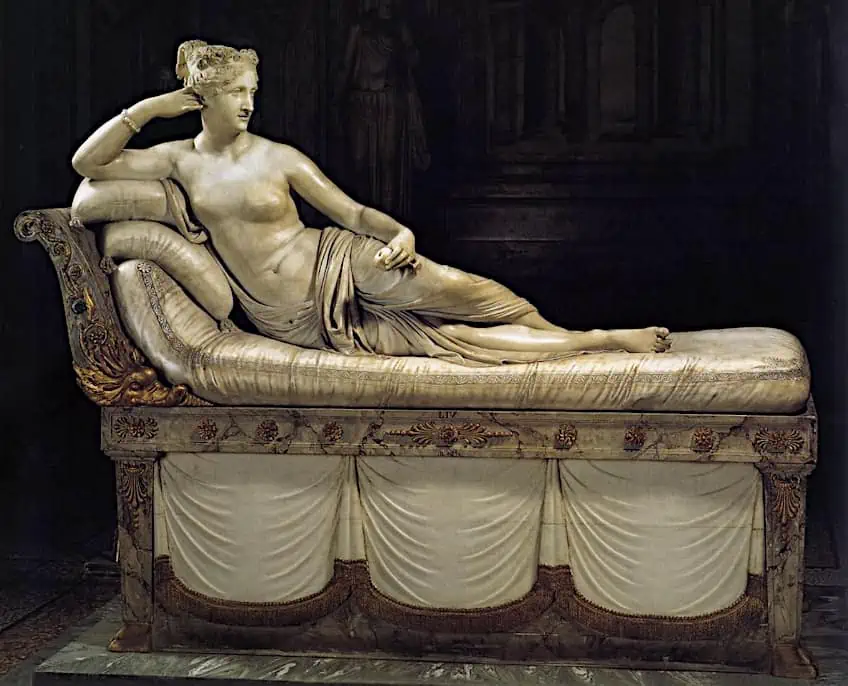
Venus Victrix (Pauline Bonaparte) by Antonio Canova (between 1804 and 1808); Antonio Canova, CC0, via Wikimedia Commons
Texture can be additionally utilized to provide movement to a picture by drawing attention to parts with more distinct textures. Artists can also create an atmosphere of tension or anxiety in their works by choosing textures that are abrasive and jagged. You can achieve a feeling of serenity or tranquility by choosing textures that are silky, flowy, or soft. Impasto is a texture modification method used by painters that involve spreading paint thickly and producing visible brushstrokes. This method can give you a highly textured surface that is aesthetically appealing and intriguing.
Sgraffito is another significant technique that involves scraping away the top of the paint to expose layers beneath. This method can result in a highly textured surface that is both aesthetically and tactilely appealing.
Space
The visual area or atmosphere generated by a piece of art is referred to as space in art. It is one of the most important aspects used by artists to produce powerful works. This can pertain to the space within an object as well as the space between objects. It may also refer to the empty space in an artwork that lacks subjects or things. As a result, space in art is primarily defined by the connection between objects and subjects. Audiences can deduce essential information about the art and the setting from the space in art. This is based on the interaction between subjects and things. Line, color, and space are used by artists to create a feeling of depth, dimension, and perspective.

Interior of a Gothic Church by Pieter Neefs the Elder (1636); Pieter Neefs the Elder, Public domain, via Wikimedia Commons
The artist may emphasize a certain subject and establish a focal point in art by utilizing space. Utilize space to draw the viewer’s attention in and create a feeling of rhythm in the artwork. Artists may influence space to elicit a range of emotions, from harmony to sensations of dread or tension. Several things put close together, for example, might give a sensation of discomfort, but it also provides harmony and cohesiveness between those objects. Objects that are more equally spaced could offer a sense of equilibrium.
The home in the center of White Night (1901) by Edvard Munch draws the eye in, while the surrounding, crowded overlapping trees make the house appear sheltered. In contrast, Munch has allowed greater space between components of the bleak countryside in the distance. This conveys the grandeur of the countryside, the seclusion of the home, and the boundary between security and the unknown to the observer. Composition is one of the most prevalent ways that painters create the appearance of space in their works. Artists can guide the viewer’s eye to certain aspects of the artwork and give the appearance of depth and distance by arranging objects, people, or other components within the frame in a specific way.
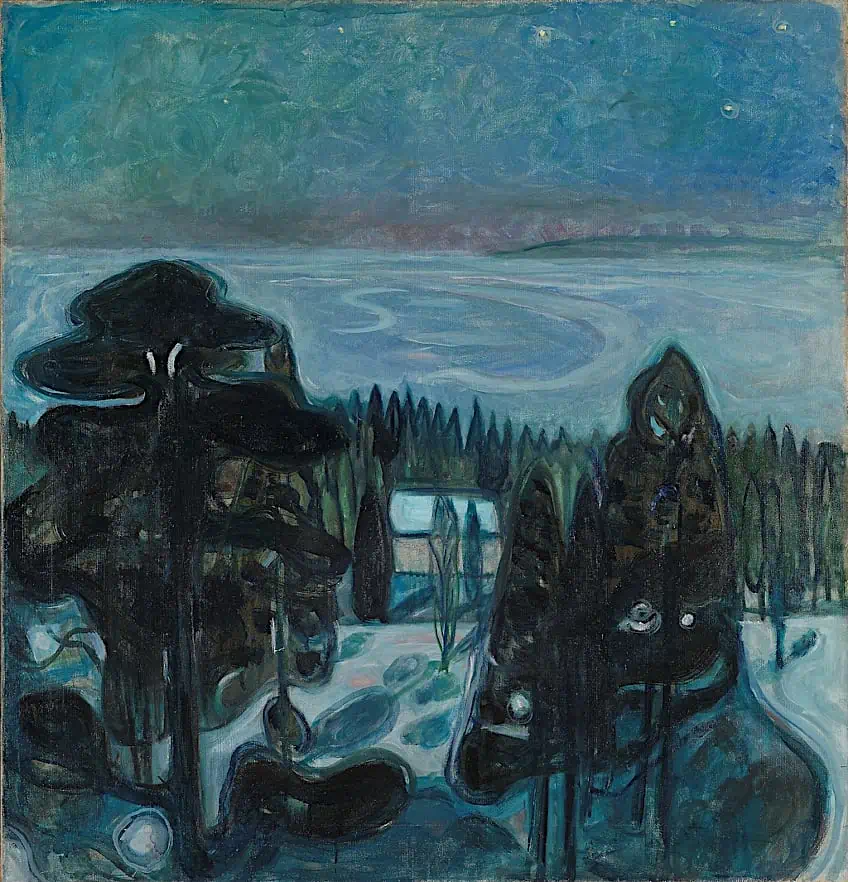
White Night by Edvard Munch (1900 – 1901); Edvard Munch, CC BY-SA 4.0, via Wikimedia Commons
The seven elements of art are typically considered to be the building elements of composition. When we analyze a painting, drawing, sculpture, or design, we look at the component pieces and how they work together to produce the overall impact of the artwork. Each of the aspects can also be utilized alone to emphasize a certain characteristic in an artwork. Various elements can portray aspects like motion and rhythm, space and dimension, harmony and contrast, loudness and tranquility, and a wide spectrum of emotions found in great art.
Frequently Asked Questions
What Are the Elements of Art in Design?
Art elements are similar to atoms in that they both act as building blocks for producing anything. The elements are like atoms which combine to create something even more complex. The same is true for art elements. Artists utilize these seven elements of art, combining them with design principles to create a work of art. Although not every work of art has all of these components, at least a couple are always present. A sculptor, for instance, must have both space and form in a sculpture by default since both features are three-dimensional. They may also be used in two-dimensional works by employing perspective and shading.
Why Are Art Elements Important?
Each element has a distinct purpose in the creation of a good work of art, and recognizing these elements is critical for both artists and audiences. The seven elements of art establish a framework for artists to create and evaluate their works. Artists can create aesthetically intriguing, balanced, and captivating paintings by learning how to employ each element successfully. Color, value, and texture, for instance, can be employed by an artist to create a three-dimensional feeling of space inside a canvas. Mastering the seven elements of art can help people enjoy and evaluate art more effectively. Viewers may better comprehend how a work of art was developed and what effect it is intended to have by understanding the role of each element in it. Furthermore, these art elements are regarded as universal, which means they apply to all kinds of visual art, from sculpting and painting to graphic design and photography. This makes them a crucial tool for artists who work in any media, as well as art instructors teaching visual art fundamentals.
In 2005, Charlene completed her wellness degrees in therapeutic aromatherapy and reflexology at the International School of Reflexology and Meridian Therapy. She worked for a company offering corporate wellness programs for several years before opening her own therapy practice. In 2015, she was asked by a digital marketer friend to join her company as a content creator, and it was here that she discovered her enthusiasm for writing. Since entering the world of content creation, she has gained a lot of experience over the years writing about various topics such as beauty, health, wellness, travel, crafting, and much more. Due to various circumstances, she had to give up her therapy practice and now works as a freelance writer. Since she is a very creative person and as a balance to writing likes to be active in various areas of art and crafts, the activity at acrylgiessen.com is perfect for her to contribute their knowledge and experience in various creative topics.
Learn more about Charlene Lewis and about us.





